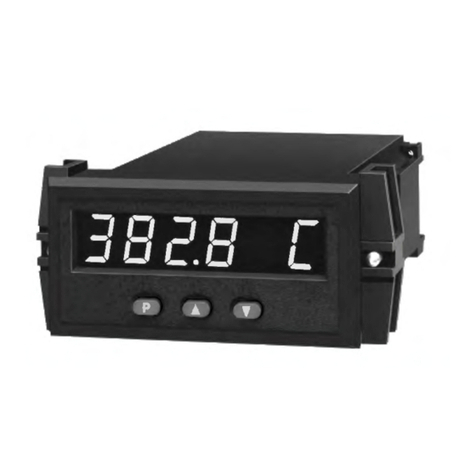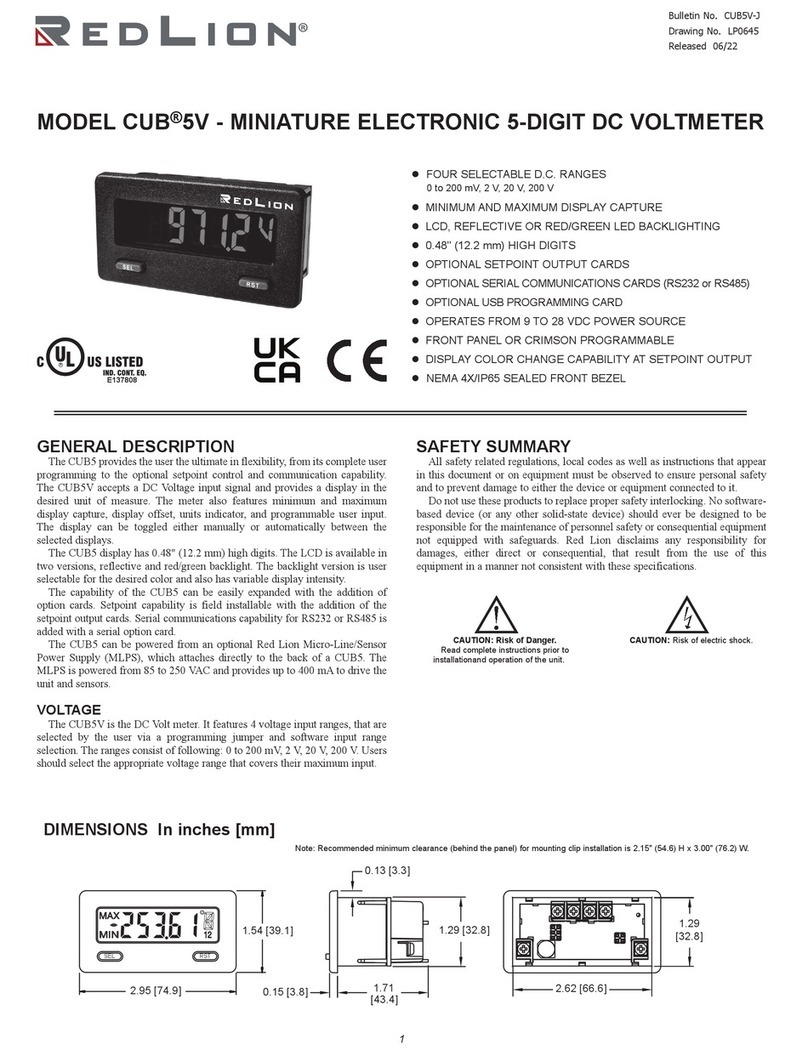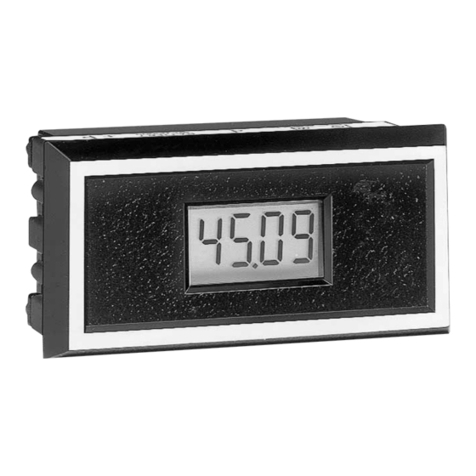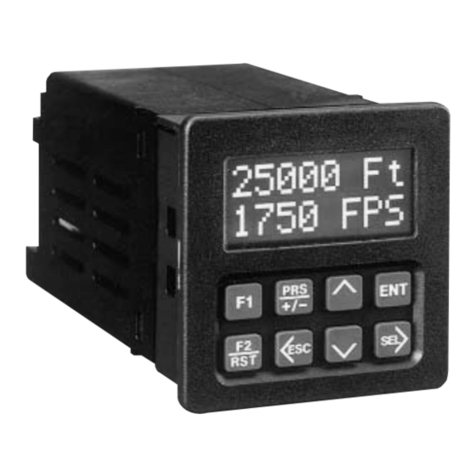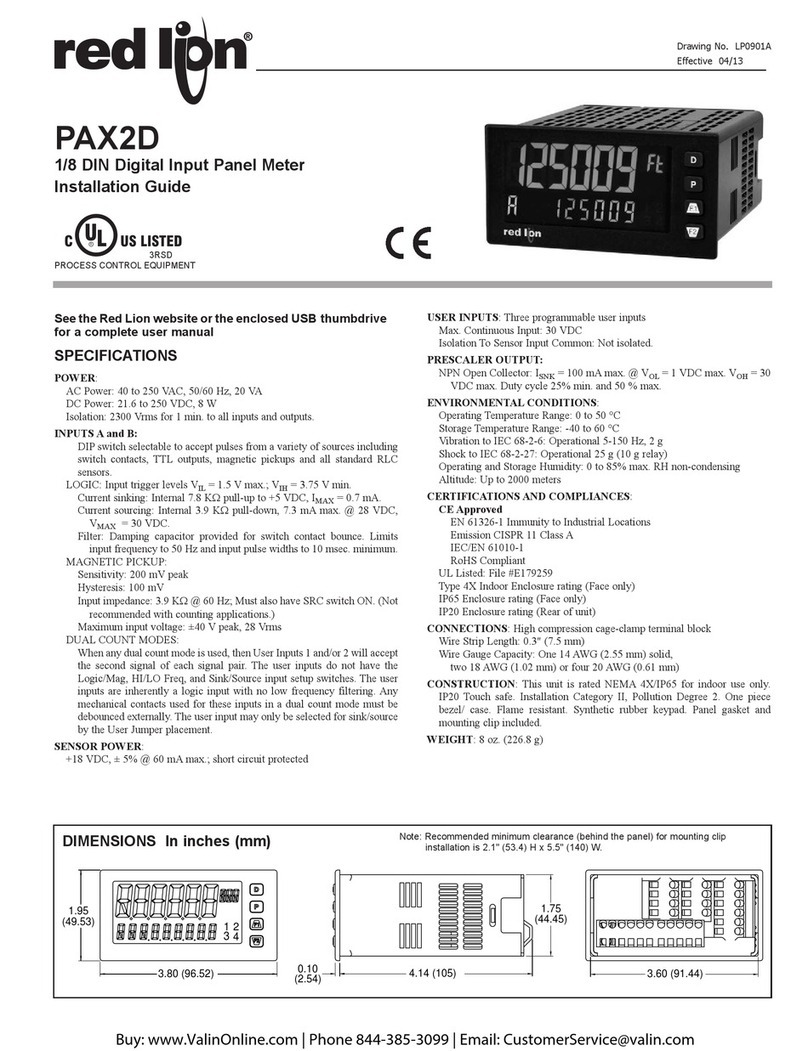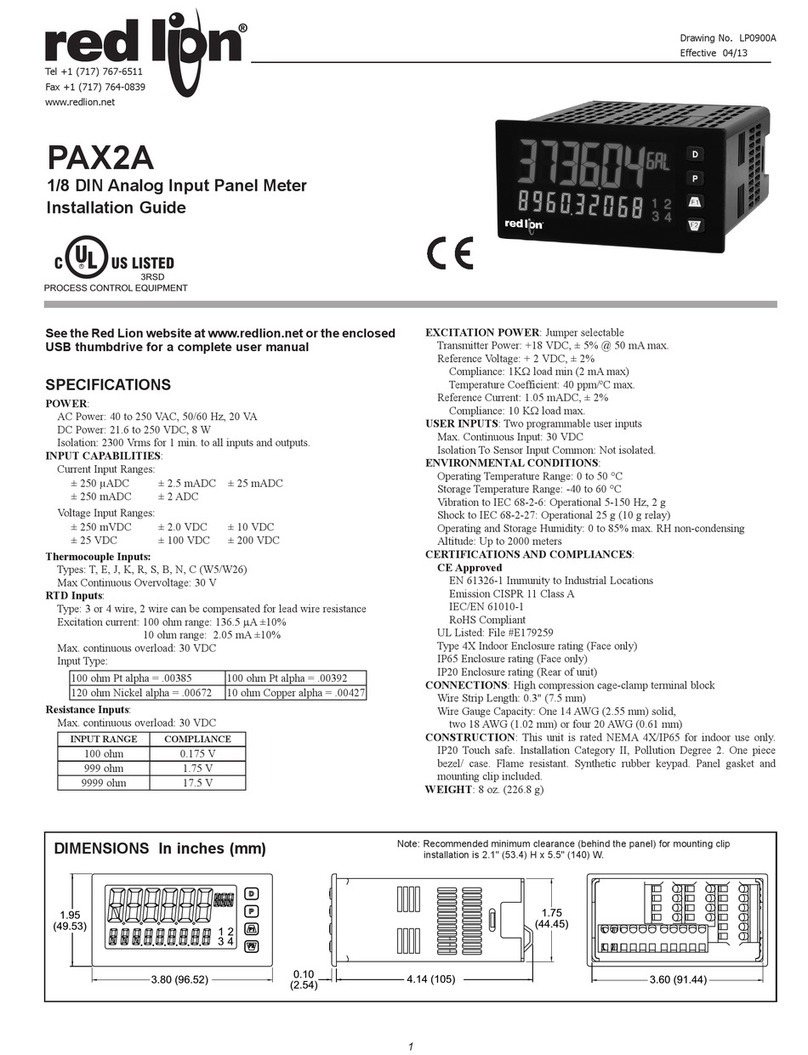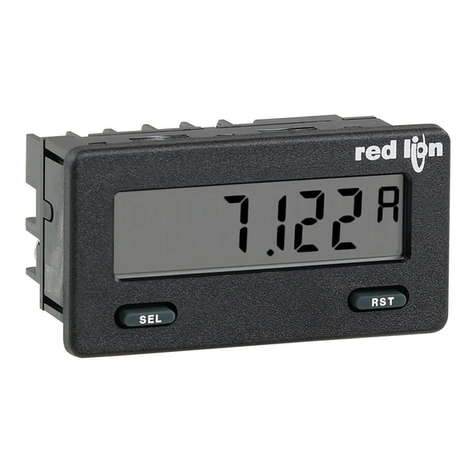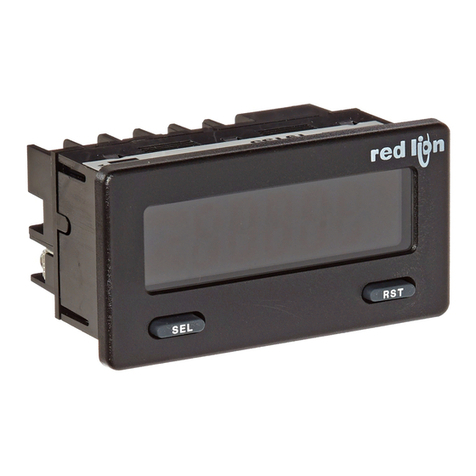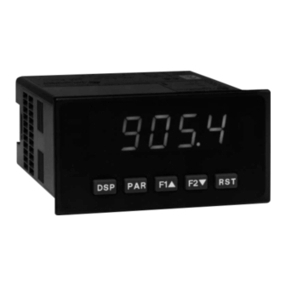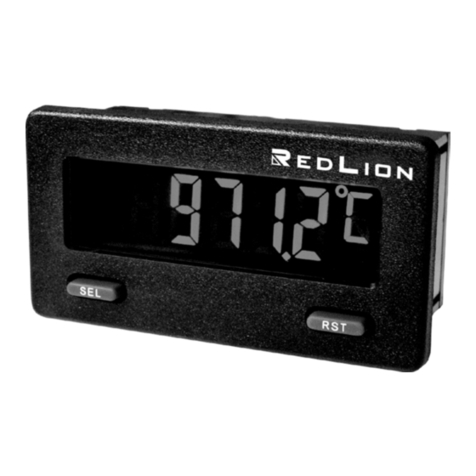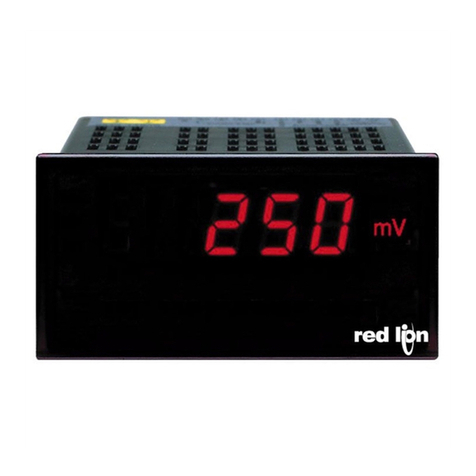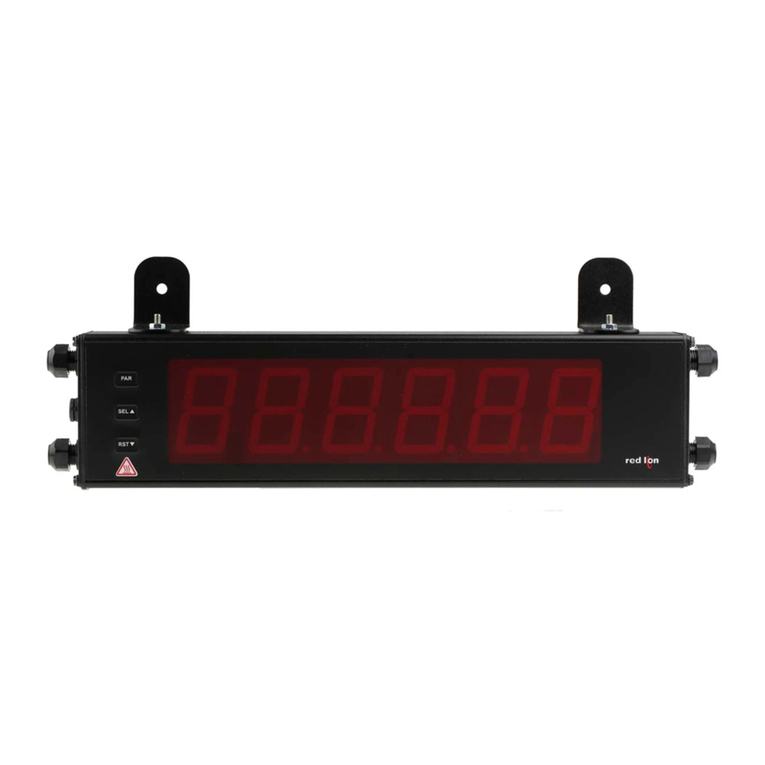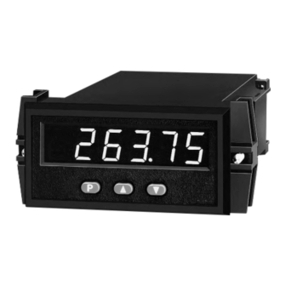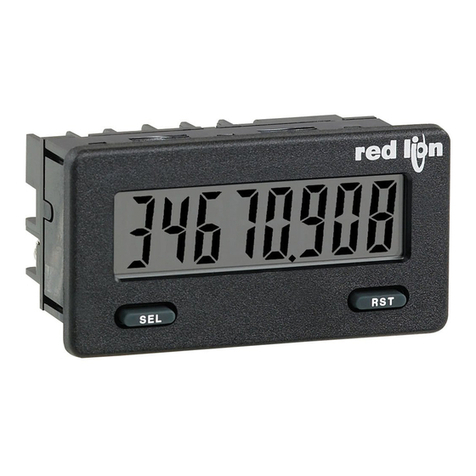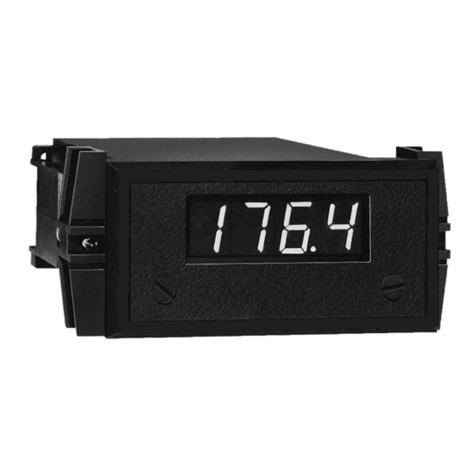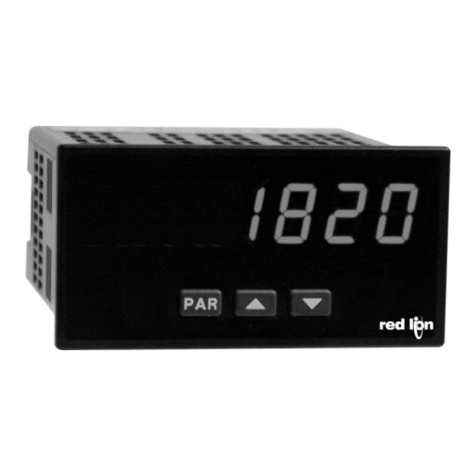2
SPECIFICATIONS (Cont’d)
11. CERTIFICATIONS AND COMPLIANCES:
ELECTROMAGNETIC COMPATIBILITY:
Notes:
1. Self-recoverable loss of performance during EMI disturbance at 10 V/m:
Process signal may deviate during EMI disturbances.
For operation without loss of performance:
Unit is mounted in a grounded metal enclosure (Buckeye SM7013-0 or
equivalent)
I/O and power cables are routed in metal conduit connected to earth
ground.
2. Self-recoverable loss of performance during EMI disturbance at 10 V/rms:
Process signal may deviate during EMI disturbances.
For operation without loss of performance:
Install power line filter, RLC#LFIL0000 or equivalent
Refer to the EMC Installation Guidelines section of this bulletin for
additional information.
12. WEIGHT: 1.2 lbs. (0.54 Kg)
FACTORY CALIBRATION
When the unit is shipped from the factory, it is calibrated to read 1,999 with
5 amps AC current input.
SCALING
The numerical current value displayed by the Apollo can be scaled down to
almost any numerical value. The coarse scale adjust pot. can be set to divide the
numerical current reading by any division factor between ÷1 and ÷10. The front
panel fine scale adjust pot. can be used as a fine trim scaling adjustment.
DECIMAL POINT SELECTION
The Apollo 5 amp Current Meter has 3 DIP switches located on the side of
the unit for the selection of 1 of 3 decimal points for display.
EMC INSTALLATION GUIDELINES
Although this unit is designed with a high degree of immunity to
ElectroMagnetic Interference (EMI), proper installation and wiring methods
must be followed to ensure compatibility in each application. The type of the
electrical noise, source or coupling method into the unit may be different for
various installations. Cable length, routing and shield termination are very
important and can mean the difference between a successful or a troublesome
installation. Listed below are some EMC guidelines for successful installation
in an industrial environment.
1. The unit should be mounted in a metal enclosure, that is properly connected
to protective earth.
2. Use shielded (screened) cables for all Signal and Control inputs. The shield
(screen) pigtail connection should be made as short as possible. The
connection point for the shield depends somewhat upon the application.
Listed below are the recommended methods of connecting the shield, in order
of their effectiveness.
a. Connect the shield only at the panel where the unit is mounted to earth
ground (protective earth).
b. Connect the shield to earth ground at both ends of the cable, usually when
the noise source frequency is above 1 MHz.
c. Connect the shield to common of the unit and leave the other end of the
shield unconnected and insulated from earth ground.
3. Never run Signal or Control cables in the same conduit or raceway with AC
power lines, conductors feeding motors, solenoids, SCR controls, and
heaters, etc. The cables should be run in metal conduit that is properly
grounded. This is especially useful in applications where cable runs are long
and portable two-way radios are used in close proximity or if the installation
is near a commercial radio transmitter.
4. Signal or Control cables within an enclosure should be routed as far away as
possible from contactors, control relays, transformers, and other noisy
components.
5. In extremely high EMI environments, the use of external EMI suppression
devices, such as ferrite suppression cores, is effective. Install them on Signal
and Control cables as close to the unit as possible. Loop the cable through the
core several times or use multiple cores on each cable for additional
protection. Install line filters on the power input cable to the unit to suppress
power line interference. Install them near the power entry point of the
enclosure. The following EMI suppression devices (or equivalent) are
recommended:
Ferrite Suppression Cores for signal and control cables:
Fair-Rite # 0443167251 (RLC #FCOR0000)
TDK # ZCAT3035-1330A
Steward #28B2029-0A0
Line Filters for input power cables:
Schaffner # FN610-1/07 (RLC #LFIL0000)
Schaffner # FN670-1.8/07
Corcom #1VB3
Corcom #1VR3
Note: Reference manufacturer’s instructions when installing a line filter.
6. Long cable runs are more susceptible to EMI pickup than short cable runs.
Therefore, keep cable runs as short as possible.
WIRING CONNECTIONS
As depicted in the drawing showing the rear view of the Apollo 5 amp current
meter, there is a terminal block where all wiring connections are made.
All conductors should meet voltage and current ratings for each terminal.
Also cabling should conform to appropriate standards of good installation, local
codes and regulations. It is recommended that power supplied to the unit be
protected by a fuse or circuit breaker.
Remove the block for easier access to the terminal screws. To remove the
block, pull from the back of the block until it slides clear of the terminal block
shroud.
CAUTION: Disconnect power to all unit terminals before removing
terminal blocks. This includes deenergizing the current transformer
primary circuit.
POWER WIRING
Primary AC power is connected to Terminal 1 and 2 (marked A.C. power,
located on the left-hand side of the terminal block). For best results, the AC
power should be relatively “clean” and within the specified ±10% variation
limit. Drawing power from heavily loaded circuits that also power loads that
cycle on and off, should be avoided.
power mains class A
enclosure class AEN 55011RF interference
Emissions to EN 50081-2
level 3; 10 V/mENV 50204simulation of cordless telephone
150 KHz - 80 MHz
level 3; 10 V/rms 2
EN 61000-4-6RF conducted interference
level 3; 2 Kv power
level 4; 2 Kv I/OEN 61000-4-4fast transients (burst)
80 MHz - 1 GHz
level 3; 10 V/m 1
EN 61000-4-3electromagnetic RF fields
level 3; 8 Kv air
level 2; 4 Kv contactEN 61000-4-2electrostatic discharge
level 4; 30 A/mEN 61000-4-8power frequency magnetic fields
200 Hz, 50% duty cycle
Immunity to EN 50082-2
900 MHz ± 5 MHz

